ASUS TUF Gaming Radeon RX 7900 XTX OC GPU Review
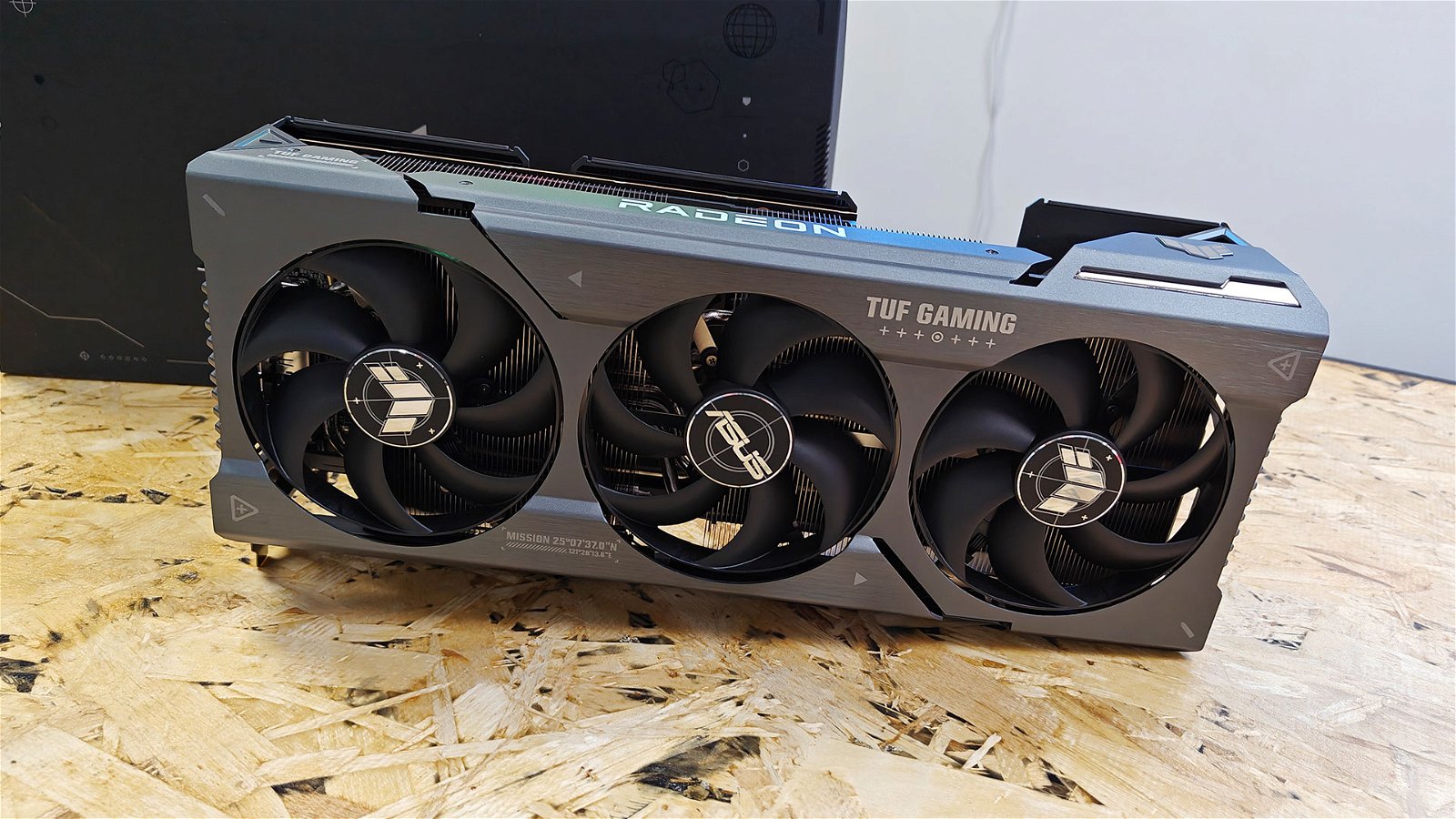
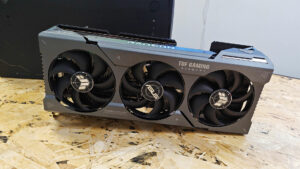
AMD made a big splash this generation with the RX 7900 GPU series. Coming out of the gate with a bang, AMD positioned the GPUs to go head-to-head with the NVIDIA 4080, which is cheaper but still incredibly close in many benchmarks. But while a reference card will play it safe in terms of design and speed, third-party cards can push the chips to the limit to see what is really possible.
This is exactly the case with the ASUS TUF Gaming Radeon RX 7900 XTX OC GPU. It is a GPU that improves on almost every benchmark we saw in our XTX review while delivering a very impressive-looking card that is ready to take on any game you can throw at it.
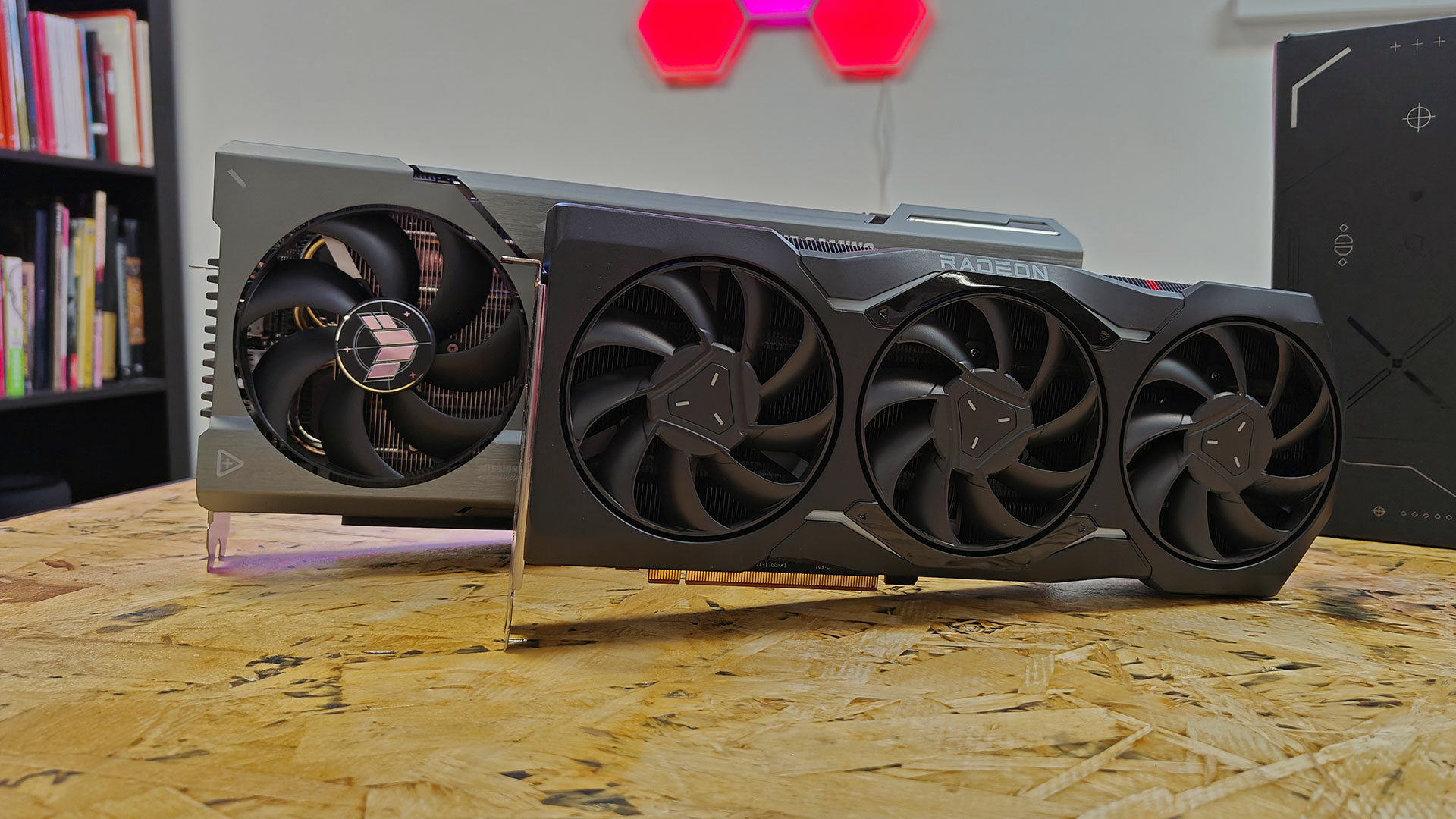
On the surface, ASUS has made a lot of changes to the RX 7900 XTX’s appearance. I was a fan of the sleek and minimalist look of the reference-designed cards, which took up less space while having a uniquely AMD look throughout. ASUS, on the other hand, has opted for a more imposing feel, similar to previous TUF cards we have looked at. The triple fan design feels incredibly premium, striking a good balance between what AMD fans expect and ensuring that the ASUS TUF aesthetic is present throughout.
The triple-fan cooler and 3.6-slot design, coupled with triple 8-pin PCIe power connectors, make this card a must-have for many. In addition to three DisplayPort 2.1 outputs and one HDMI 2.1 output (but no USB Type-C port supporting DP2.1), it can reach frame rates of up to 480Hz in 4K and 165Hz in 8K when paired with AMD’s new Radiance display engine, which supports DisplayPort 2.1. Nvidia omitted this display port from the RTX 4090, so AMD’s offering is a welcome addition to the market.
The ASUS RX 7000 series offers a familiar design, with the same black and silver aesthetic and triple fan setup as the previous generation of TUF cards. For those looking for an extra bit of power, the OC revision allows users to achieve additional overclocking with a single click through the GPU Tweak software’s OC Mode profile. This mode pushes the RX 7900 XTX to a game clock of 2395 MHz and a boost clock of 2565 MHz, making it, on the surface, an exciting choice for people that like to push their GPUs to the limit.
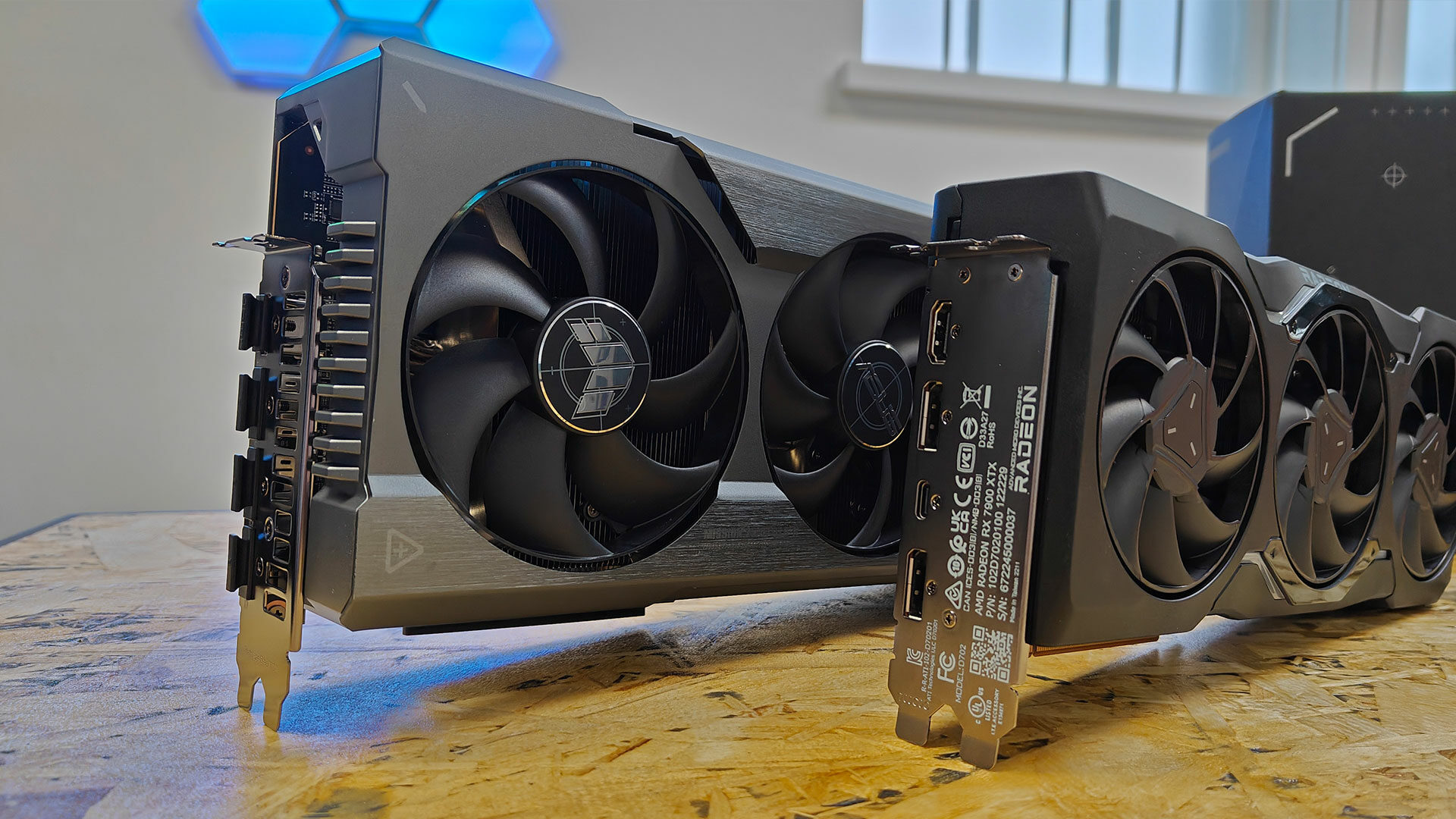
In addition to incorporating a third 8-pin connector, ASUS has improved the new TUF cards’ static pressure and quietness by boosting the size and airflow capacities of the fans. The main difference between ASUS’s and AMD’s reference Radeon RX 7900 XTX and Radeon RX 7900 XT graphics cards is that the latter does not feature a USB Type-C connection, which is unnecessary for the vast majority of gamers. Instead, you’ll find one HDMI 2.1 port and three DisplayPort 1.4 ports, all of which are 4K 120Hz+ capable.
“Built on the same core as all RDNA 3 GPUs, the ASUS TUF Gaming Radeon RX 7900 XTX OC GPU delivers a similar boasted 54 percent performance boost over previous generation AMD cards. “It’s worth noting that while the reference RX 7900 XTX has a 2500 MHz boost clock and 2300 core speeds, the TUF Gaming AMD Radeon RX 7900 XT tops out at 2,565 MHz in boost and an impressive 2396 MHz in core speeds. The card features 384 texture units, 58 billion transistors and 96 beam accelerators. This enables a maximum performance of 61 TFLOPs in single precision and a peak of 123 TFLOPs in half precision. In addition, the GDDR6 RAM clocks at 20Gbps, and there is 96MB of infinite cache for a total of 24GB, giving you a bandwidth of 960GB/s.
Built on the same core as all RDNA 3 GPUs, the ASUS TUF Gaming Radeon RX 7900 XTX OC GPU delivers a similar boasted 54 percent performance boost over previous generation AMD cards. The Radeon 7900 XTX also offers an impressive 6-memory cache die setup, providing a combined bandwidth of 3TB/s – a 7x improvement over the RDNA 2-based series GPUs. Those opting for the slightly less powerful RX 7900 XT will be limited to five dies, still offering a significant improvement over the RX 6000 series, albeit at a lower bandwidth.
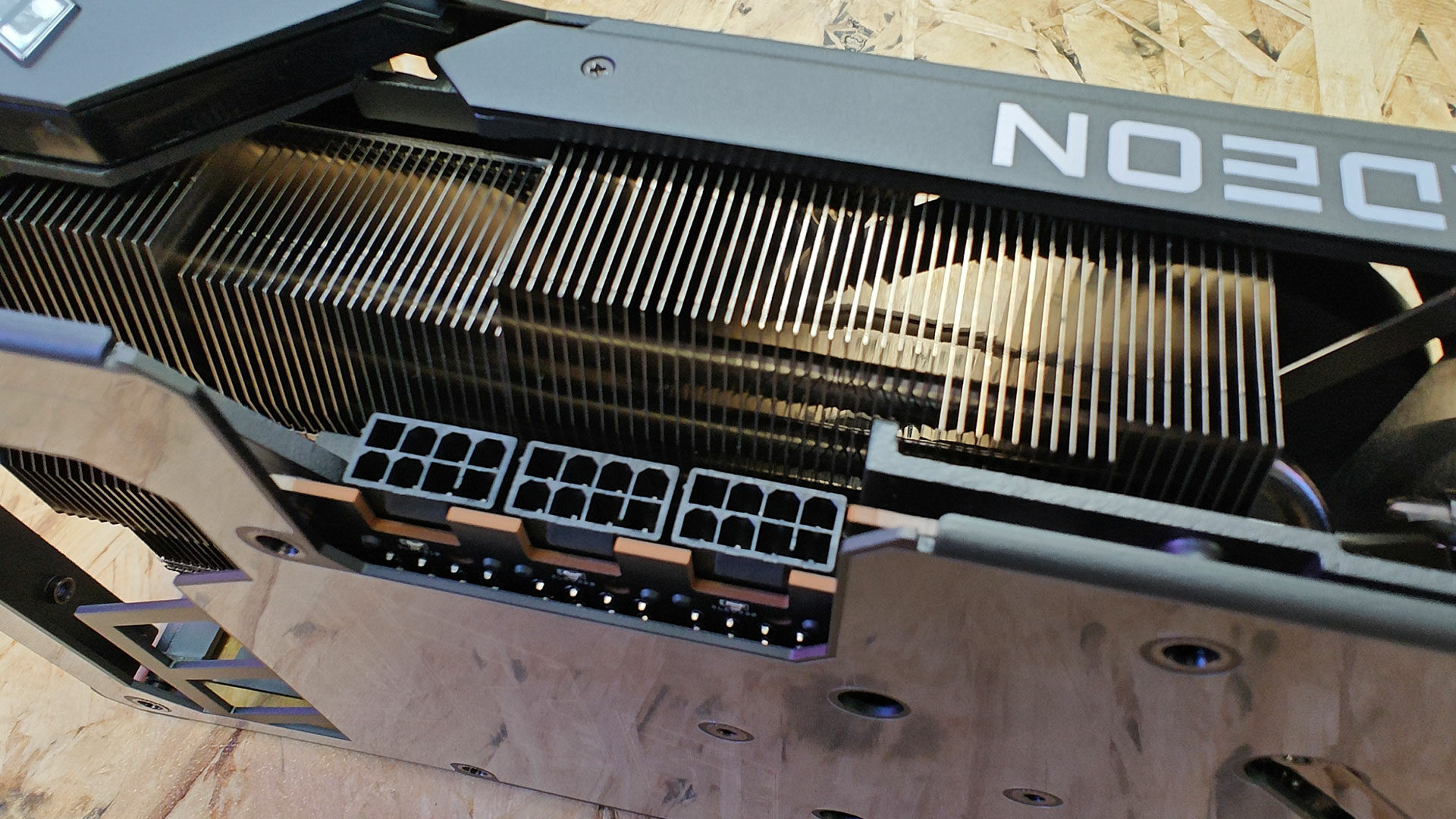
As we saw with the reference cards, the ASUS TUF Gaming Radeon RX 7900 XTX OC GPU offers notable advances in ray tracing, allowing gamers to push their favourite titles further than ever before. RDNA 3 brings numerous improvements to ray tracing acceleration, including an advanced cache structure that allows more rays to be rendered at a higher rate.
It also employs methods that skip certain parts of the acceleration structure during traversal to improve efficiency. Ultimately, the degree of improvement will depend on the game itself, but with the right tools, developers can get the most out of AMD hardware and make it a strong competitor to NVIDIA’s offerings.
While the RX 7900 XTX is built for the most demanding games, it is also an exciting proposition for creators as its new media engine delivers hardware-accelerated AV1 encoding up to 8K60, resulting in higher quality content at the same bit rate or a smaller file size with the same quality. It also enables dual simultaneous encode or decode streams for AVC and HEVC up to 8K60. Support for Adobe Premiere Pro has already been provided with other software, either in beta or out in the wild, for people to test.
As mentioned in our RX 7900 XTX reference review, our test bench was set up to optimize conditions to reveal the full potential of RDNA 3. We built each system in a Cooler Master H500p chassis fitted with a 1000W be quiet! power supply, a Corsair AIO cooler, 64GB of SK Hynix DDR5 memory and a PCIe Gen 4 2TB Kingston Fury M.2 SSD. An AMD Ryzen 9 7950X CPU ensured that there were no processor bottlenecks preventing the card from reaching its maximum capabilities and allowed us to get a glimpse of the GPU’s full potential.

Cyberpunk 2077 was one of the most anticipated games of 2020 and a benchmark title for PC gamers. Developed by CD Projekt Red, this dystopian, open-world action-adventure RPG features three ray tracing settings and delivers an incredible level of visual fidelity, even at 1440P. It runs on any system but demands top performance, making it the perfect choice for testing out new hardware. Cyberpunk 2077 is truly stunning to look at and will push your gaming rig to the limit.
Given that this is an overclocked card, it should come as no surprise how well it performed against the competition and the RX 7900 XTX reference card. The ASUS TUF Gaming Radeon RX 7900 XTX OC demonstrated remarkable performance in a number of tests, coming close to or even beating the more expensive NVIDIA RTX 4080 Founders Edition (Not taking into account DLSS 3).
What is even more impressive is that it managed to match the even more expensive RTX 4090, making it an excellent value for money. Even judging by how the tests are going, it seems that ASUS has taken an already exciting offering and improved it in the areas that count, resulting in a very capable gaming GPU.

The ASUS TUF Gaming Radeon RX 7900 XTX OC card packs a powerful punch, and there’s no better way to see this than by playing Shadow of the Tomb Raider. The latest instalment in the popular Lara Croft Tomb Raider franchise, developed by Eidos Montreal, benefits from NVIDIA RTX ray-traced visuals and DLSS support for an even more immersive experience. With its jungle settings and exotic locations, Shadow of the Tomb Raider is an excellent showcase for the capabilities of any GPU we want to put to the test.
“The ASUS TUF Gaming Radeon RX 7900 XTX GPU outperformed even the more expensive RTX 4080…”The ASUS TUF Gaming Radeon RX 7900 XTX continues to impress, delivering better-than-expected results and beating all the benchmarks we saw on the reference RX 7900 XTX, even when pushed to 4K. In the majority of our tests, the ASUS TUF Gaming Radeon RX 7900 XTX GPU outperformed even the more expensive RTX 4080, delivering stunning visuals and the iconic lighting and shadows that the game is known for.
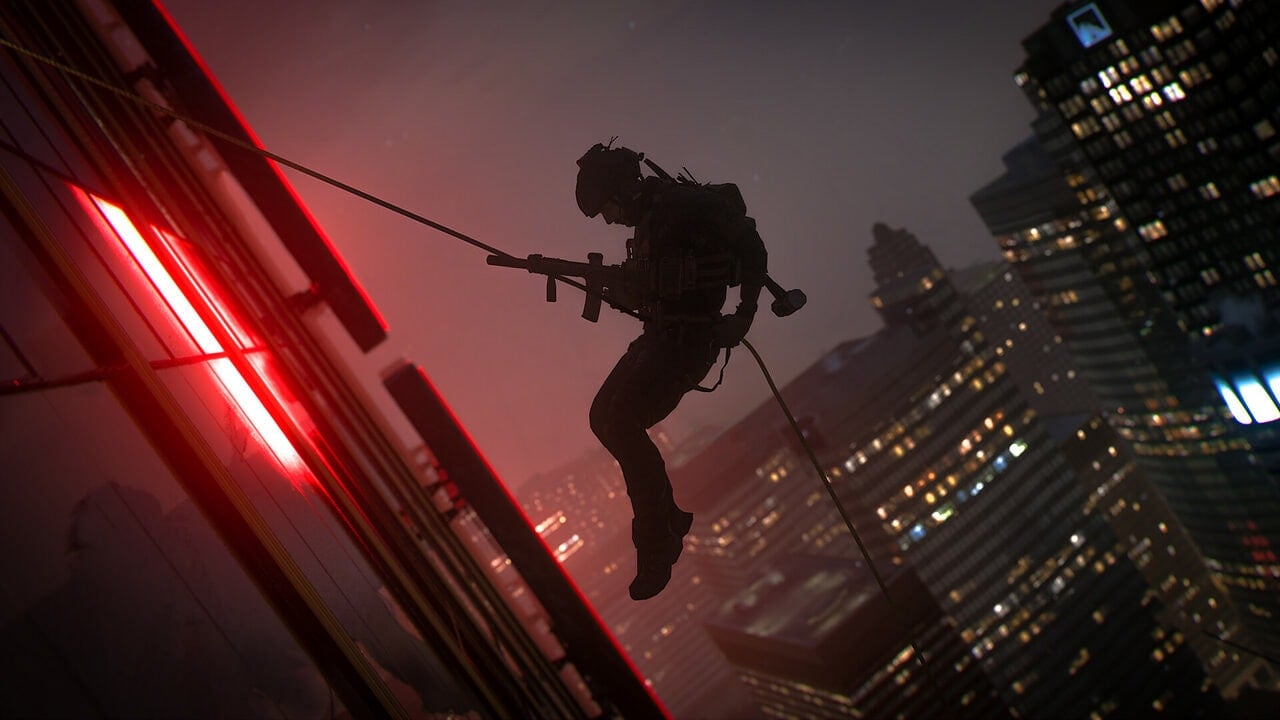
No benchmarking list would be complete without the inclusion of Call of Duty: Modern Warfare II, the latest title in Activision and Infinity Ward’s iconic first-person shooter franchise. Not only is this game a great test for the latest graphics cards, but it also performs well on older systems. Plus, its multiplayer component adds another layer of value to its graphics capabilities, making it an ideal choice when considering a new graphics card.
* This article was originally published here
Comments
Post a Comment